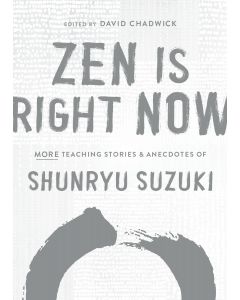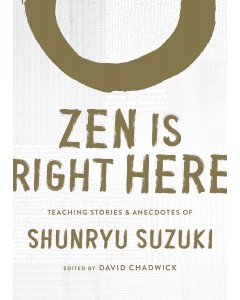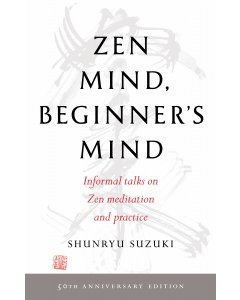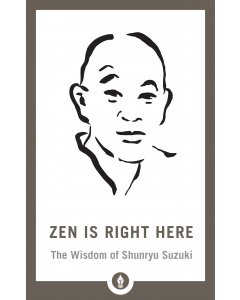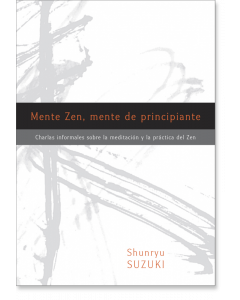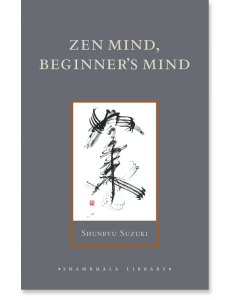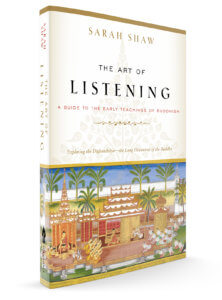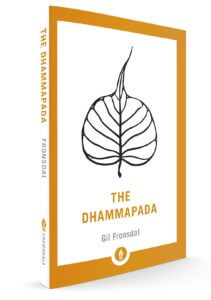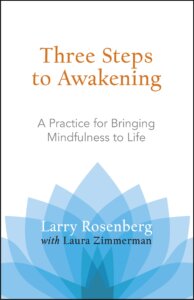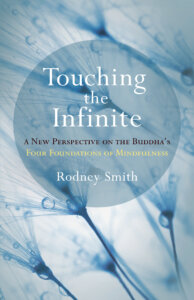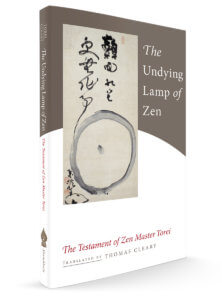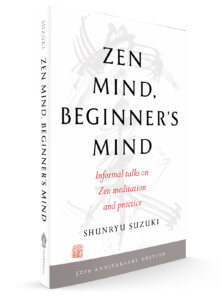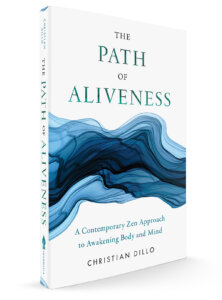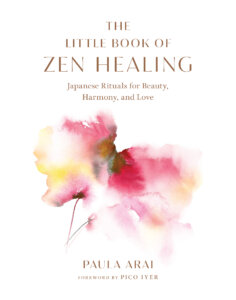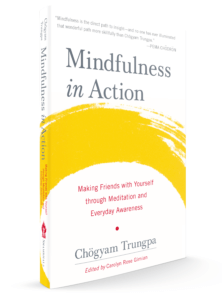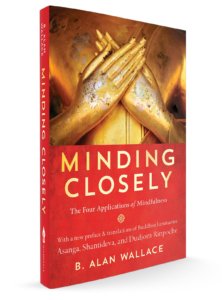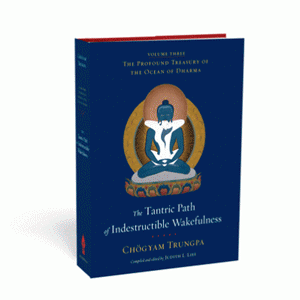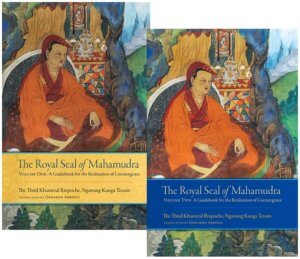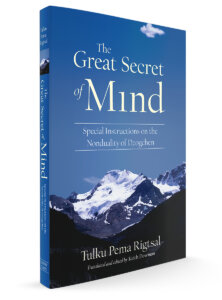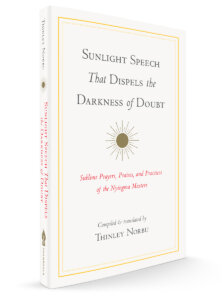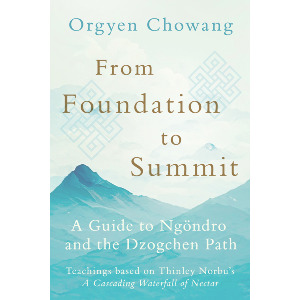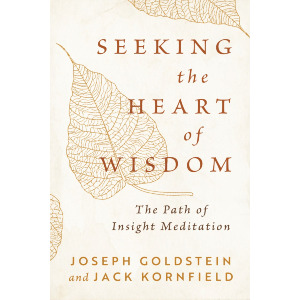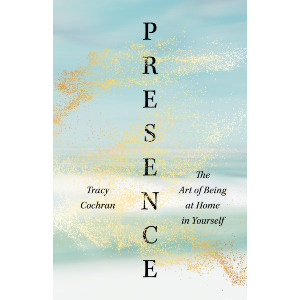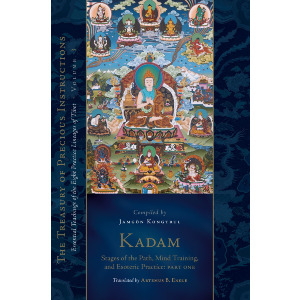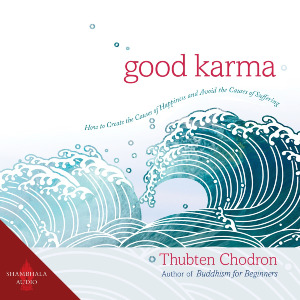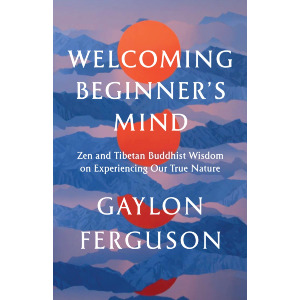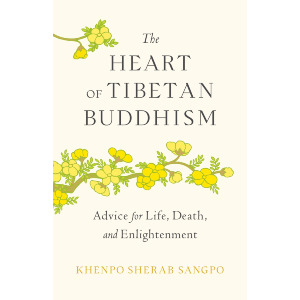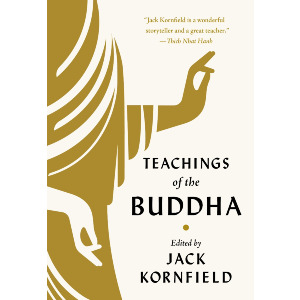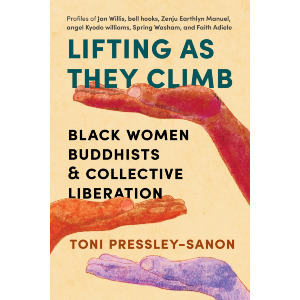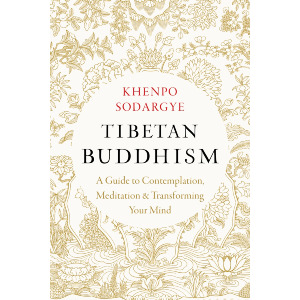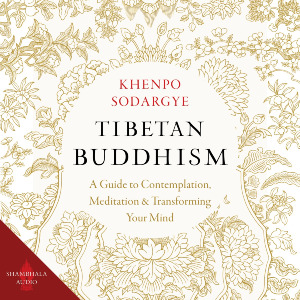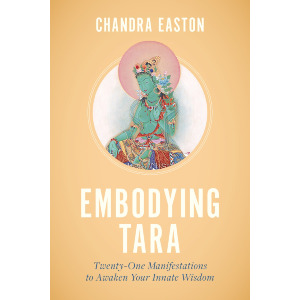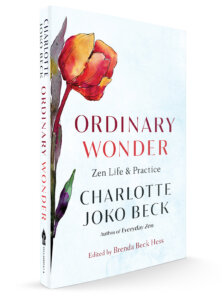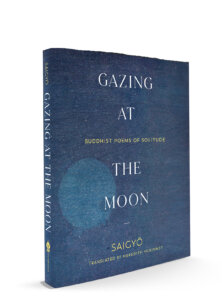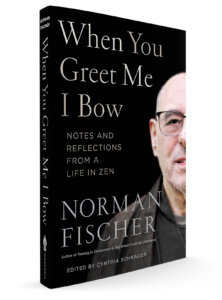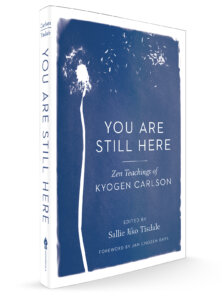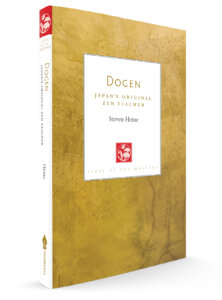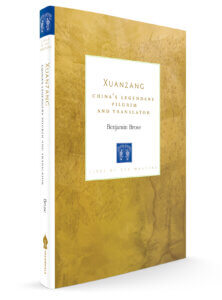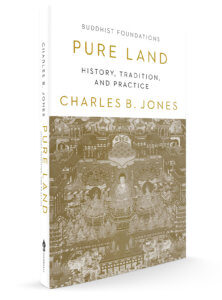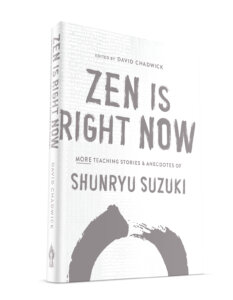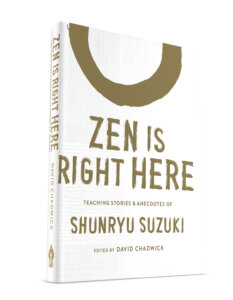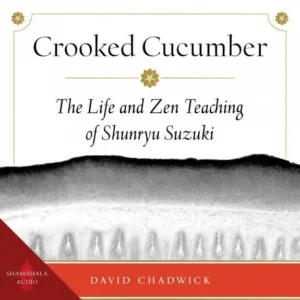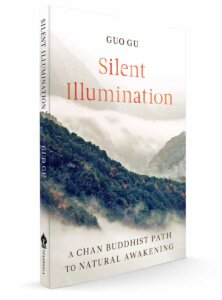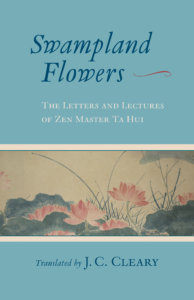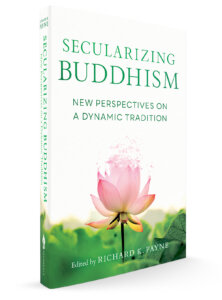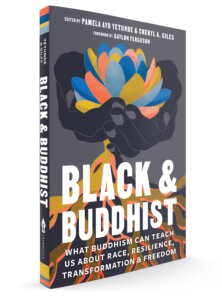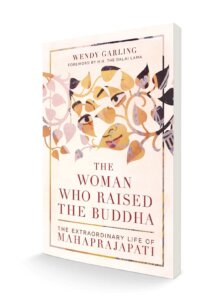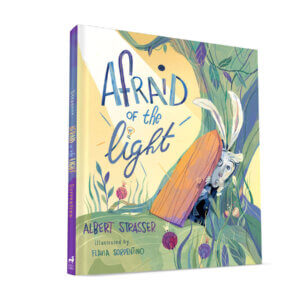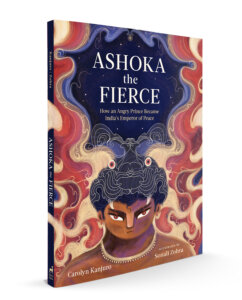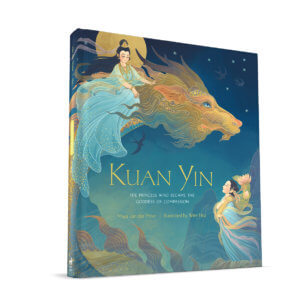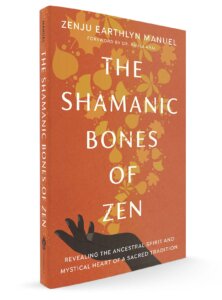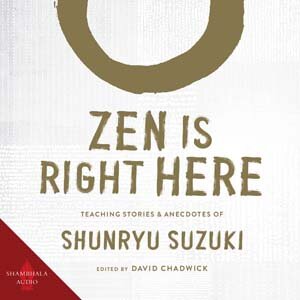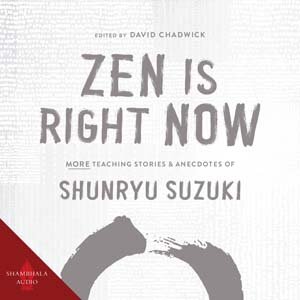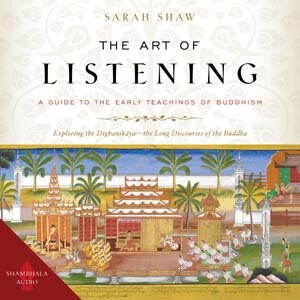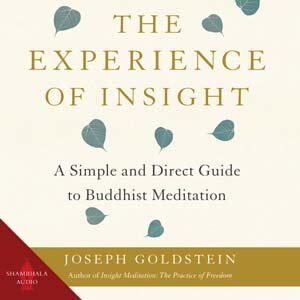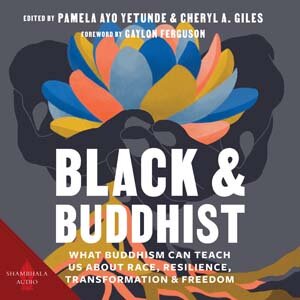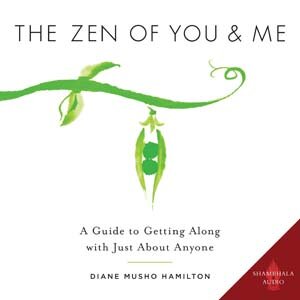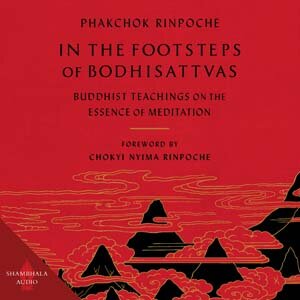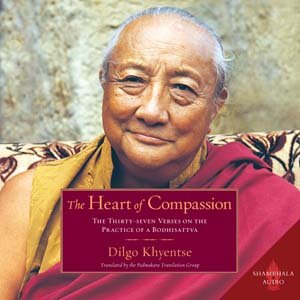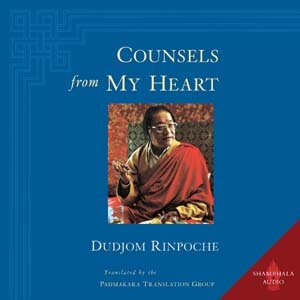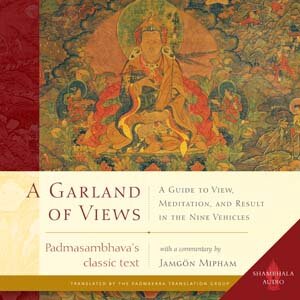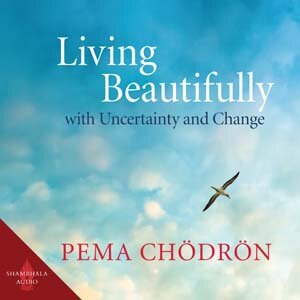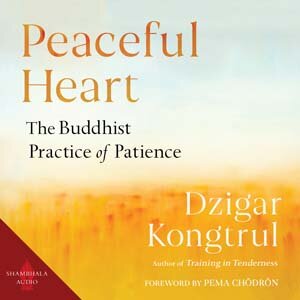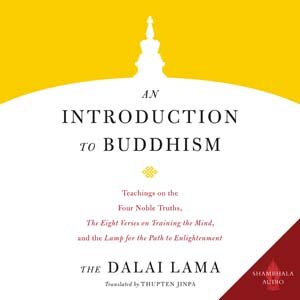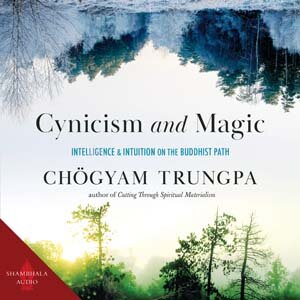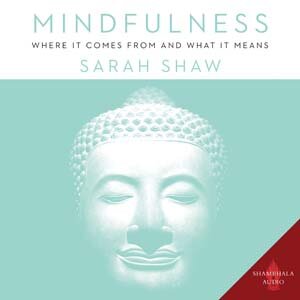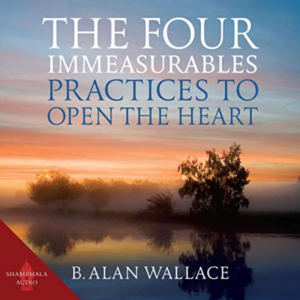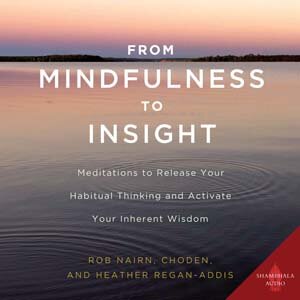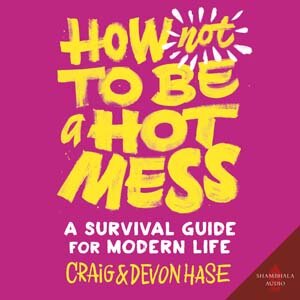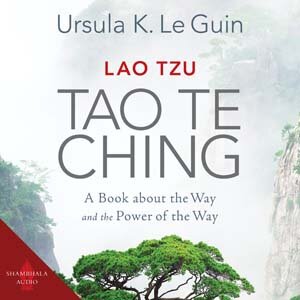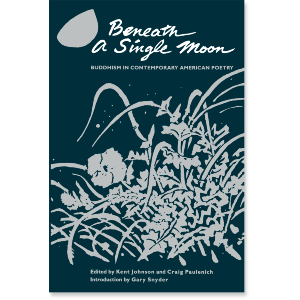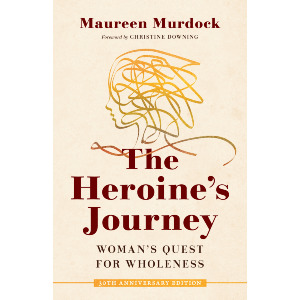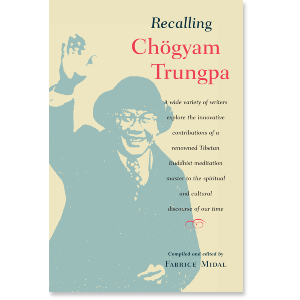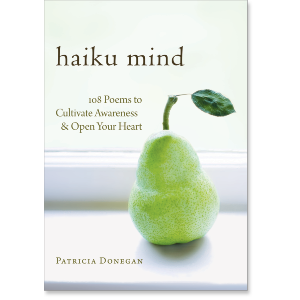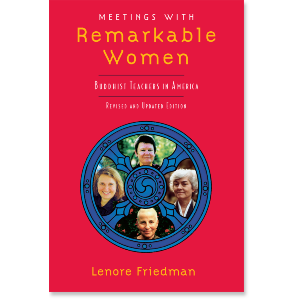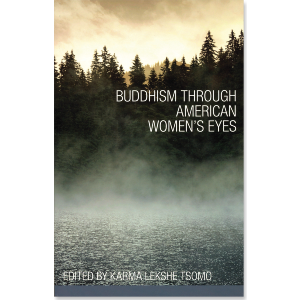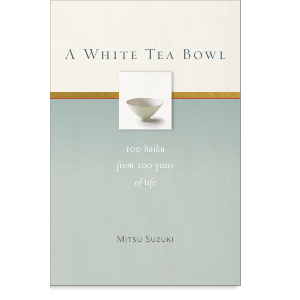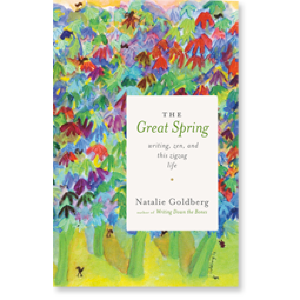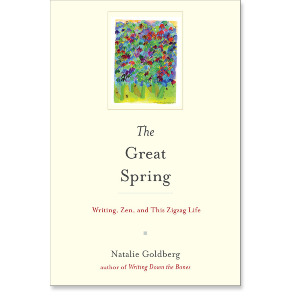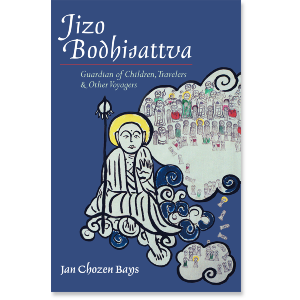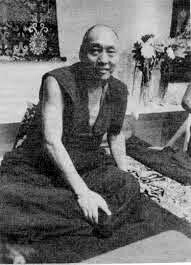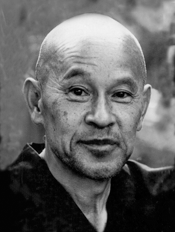

Shunryu Suzuki
Shunryu Suzuki (1904–1971) was one of the most influential spiritual teachers of the twentieth century and is truly a founding father of Zen in America. A Japanese priest of the Soto lineage, he taught in the United States from 1959 until his death. He was the founder of the San Francisco Zen Center and the Tassajara Zen Mountain Center. He is the author of Zen Mind, Beginner's Mind, Branching Streams Flow in the Darkness: Zen Talks on the Sandokai, and Zen Is Right Here: Teaching Stories and Anecdotes of Shunryu Suzuki, and he is the subject of the biography Crooked Cucumber by David Chadwick.
Shunryu Suzuki
GUIDES
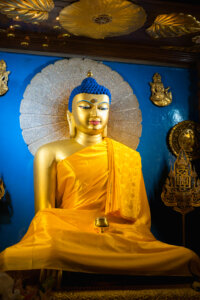
Buddhist Mindfulness: A Guide for Readers
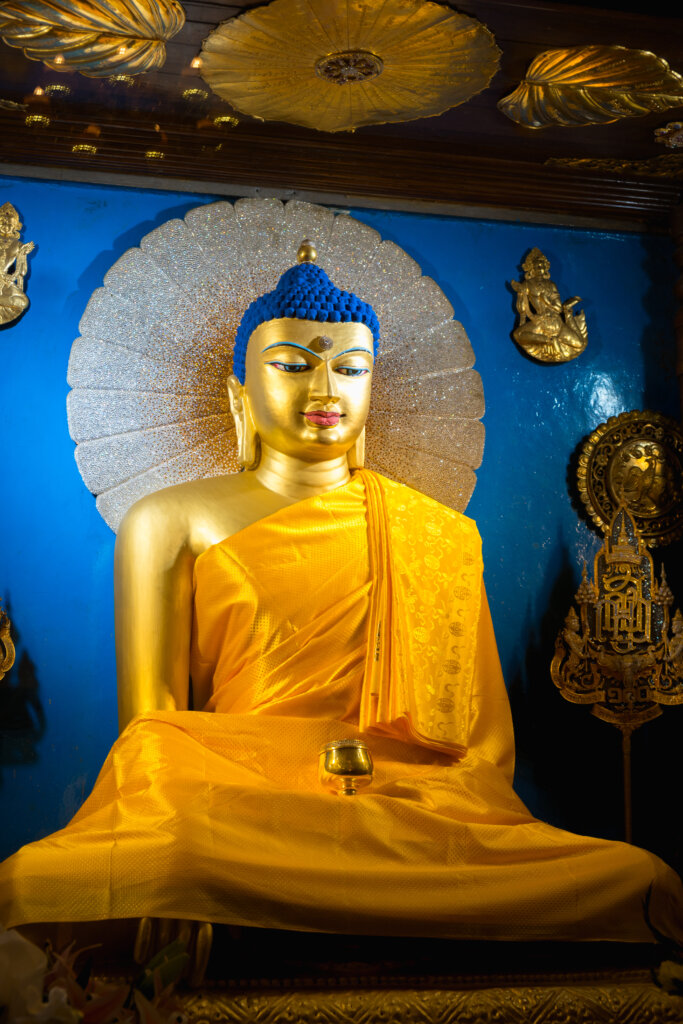
Today the term "mindfulness" has become a buzzword heard everywhere from elementary schools to corporate offices to the military. Generally speaking, when we use the term in secular life, we're referring to the ability to purposefully place our attention on our present experience whether it be walking step by step through a park, following our breath in and out or something more conventional like playing music or lifting weights. The purpose of mindfulness, in this regard, is about training one's attention.
However, while the practice of mindfulness has found its way into secular life, the roots of this Buddhist meditative practice stem far deeper, and the benefits of what we call "mindfulness" range beyond the common definition of "calming the mind" or "focusing on the present moment." In fact as Sarah Shaw points out in her book Mindfulness: Where It Comes From and What It Means, the Buddha used the Pali word sati rather than the Sanskrit term smṛti to describe mindfulness or satipaṭṭhāna. According to Shaw, the meaning of the term sati is significantly different from its Sanskrit correspondence which was more closely associated with the concept of memory rather than attention and awareness of the present moment. In this regard, Shaw notes that, the modern use of the term "mindfulness" is worthy of being understood as something far more complex and profound than simply "focused attention."
"...Buddhist understandings of psychology, of “living in the moment,” and of the benefits to be derived from this are more far-reaching than is suggested by many usages of the term mindfulness in the modern world."—Mindfulness, by Sarah Shaw
In this Guide for Readers, we'll showcase books such as Mindfulness, that delve into the historical texts, practices and applications of mindfulness from a Buddhist perspective in order to shed light on this extraordinary practice which has made headway in both religious and secular domains of modern life.
Mindfulness in the Pali Tradition
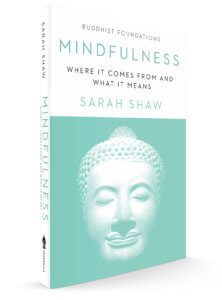
$17.95 - Paperback
Mindfulness: Where It Comes From and What It Means
By Sarah Shaw
As mentioned above, Mindfulness delves into the roots of the Buddhist practice of mindfulness from its origins in India to its spread across Asia and later into Europe and the United States. Shaw pays particular attention to the changing definition of "mindfulness," discussing both the origins of the Sanskrit term smṛti, and the Buddha's usage of the Pali term sati, as well as the etymology and biblical origins of the English term mindfulness. Her account is remarkably engaging and inspires readers to really consider the range of meaning behind this term which has become a part of everyday use.
In short, mindfulness incorporates both a sense of attentiveness and focus as well as a sense of memory and remembrance. However what is being remembered plays a large role in the context of each practice be it a Buddhist or secular activity. Through her research, Shaw takes her readers on an impressive journey through the history of mindfulness giving anyone interested in the practice a detailed map of "where it comes from," and perhaps even where it might go from here.
Crucially, she identifies how mindfulness cannot in fact be decoupled with an ethical dimension, a critique often levelled at mindfulness:
Mindfulness is one crucial part of a complete system of understanding the operation of the mind and the ways it can develop. So its nature is very different from its application in Western psychological models. Indeed, memory—the ancient Sanskrit meaning of the word—still plays an important part. Mindfulness is said always to work with other elements that support it and that it supports. Within the terms of Buddhist psychology, it simply cannot arise alone and likes company. When it arises, factors associated with it give it an ethical dimension, and other qualities arise too, such as loving kindness, compassion, sympathetic joy, and equanimity. It is found in daily life and is also essential for deep meditations known as jhānas. It is also, again with other factors, a faculty that is said to bring liberating insight and to free the mind completely.
"A brilliant and precise introduction to the deep roots of mindfulness."
—Joan Halifax, author of Being with Dying
The Art of Listening: A Guide to the Early Teachings of Buddhism
By Sarah Shaw
In a similar vein to Mindfulness discussed above, The Art of Listening takes a look at the early teachings of the Buddha—specifically the Dīghanikāya or Long Discourses of the Buddha, one of the four major collections of teachings. In her introduction Shaw explains that as people become interested in Buddhism or Buddhist practices they are interested in understanding more about the suttas (Sk. sūtras). The Art of Listening was written for the purpose of guiding people to better understand the historical texts behind Buddhist thought and practice—and of course mindfulness plays a central role.
At the same time, she encourages readers to consider the historical context of suttas—namely the tradition of reading texts out loud, memorizing larges sections and passages, and of course, listening—all of which require the practice of mindfulness. She writes:
I have found taking one at a time, letting it sink in without rushing it, is the best way to become familiar with them. If you can arrange to have them read aloud to you, you are lucky! Reading them out loud to yourself is also a helpful way of letting them have their effect. It is worth remembering that for centuries and indeed now—they have been recited, as group performances, to perhaps a large number of listeners.
In this regard, Sarah Shaw combines a literary approach and a personal one, based on her experiences carefully studying, hearing, and chanting the texts. At once sophisticated and companionable, The Art of Listening will introduce you to the diversity and beauty of the early Buddhist suttas.
Translated by Gil Fronsdal
The Dhammapada is the probably the most widely read Buddhist scripture we have. Presenting two distinct goals for leading a spiritual life—attaining happiness in this life (and in future lives) and the achievement of absolute peace—this classic text of teaching verses from the earliest period of Buddhism in India conveys the philosophical and practical foundations of the Buddhist tradition.
In terms of mindfulness, the Dhammapada represents the core teachings of the Buddha. For centuries the verses in the Dhammapada were memorized and chanted by devoted followers. Not only does the Dhammapada represent the long and rich monastic tradition of memorizing the teachings of the Buddha, but it also expresses the most fundamental teachings of the Buddha which, from a practitioners standpoint, should always remain at the forefront of one's mind.
Mindfulness of Breath: The Fundamental Key
Three Steps to Awakening: A Practice for Bringing Mindfulness to Life
By Larry Rosenberg
By Laura Zimmerman
In their introduction to Three Steps to Awakening, authors Larry Rosenberg and Laura Zimmerman ask the question:
"Is it possible for a natural, fundamental process, such as breathing in and out, to provide the foundation for a liberating meditation practice?"
They then state that "The Buddha would answer yes. He realized that the process of respiration, so often taken for granted, comprises the basis for a method of awakening available to all of you."
Drawing on the above statement, the Rosenberg and Zimmerman investigate the Buddha's method of breath awareness as an approach to liberation and well-being, presenting a threefold approach—hence, the Three Steps to Awakening. Their approach includes:
- breath awareness
- breath as anchor
- choiceless awareness (ie., awareness itself without effort or an object of focus such as the breath)
Having the three methods in one’s repertoire gives one meditation resources for any life situation. In a time of stress, for example, one might use breath awareness exclusively. Or on an extended retreat, one might find choiceless awareness more appropriate. The three-step method has been taught to Larry’s students at the Cambridge Meditation Center in Cambridge, Massachusetts, for many years.
Applying The Four Foundations of Mindfulness
Touching the Infinite: A New Perspective on the Buddha’s Four Foundations of Mindfulness
By Rodney Smith
Of the most well known teachings of the Buddha, the Four Foundations of Mindfulness described in the Satipatthana Sutta, or The Discourse on the Establishing of Mindfulness, illustrates a fundamental approach to Buddhist thought and practice. In his introduction to Touching the Infinite, Rodney Smith writes:
The practice of the Four Foundations of Mindfulness is a systematic confrontation with our belief systems that methodically removes the conditioned layers of our consensus reality, finally laying bare the ultimate reality that is the ground of being. In four integrated and interconnected practices, the Buddha lays out the entire spiritual landscape and skillfully guides us across the terrain toward the final unconditioned truth.
This particular practice of mindfulness, while contemplative in nature, involves a much more active style of mindfulness compared to focusing on the breath or movements of the body. Nonetheless, although active in nature, Smith argues that the purpose behind such contemplations is not to adhere to some superficial objectives of reality, rather, the point is to go beyond the conditioned truths such as impermanence and death.
Many interpretations of the Fourth Foundation have focused on the contemplative truths mentioned as the ground for our mindfulness, but such an interpretation does not move us toward greater depth, nor does it allow integration with the other foundations. I sense this foundation is pointing directly to the formless, which can only be characterized by what is seen within it since awareness has no formed qualities that can be described. He is encouraging us to move through the portal of emptiness back to the unconditioned ground of being (Nirvana).
Mindfulness in the Zen Tradition
Undying Lamp of Zen: The Testament of Zen Master Torei
By Zen Master Torei Enji
Edited and Translated by Thomas Cleary
This is a complete explanation of Zen practice written by one of the most eminent masters of pre-modern Japan. The author, Torei Enji (1721–1792), was best known as one of two “genius assistants” to Hakuin Ekaku, who was himself a towering figure in Zen Buddhism who revitalized the Rinzai school.
The concept 'right mindfulness' forms an important touchpoint throughout the book and comes under close examination in the appendix 'On Practice.'
The work of right mindfulness is the unsurpassed practice. If you have the work of right mindfulness, you don’t get stuck on formal practices and are not concerned with dignified manners. In principle and in fact, sitting and walking, right and wrong, action and repose, truth and untruth, in the world and beyond the world, all that’s necessary is not losing right mindfulness.
Zen Mind, Beginner’s Mind has become one of the great modern spiritual classics, much beloved, much reread, and much recommended as the best first book to read on Zen.
Similar to Sarah Shaw's definition of mindfulness as a universal, Shunryu Suzuki Roshi explains that mindfulness is a kind of wisdom beyond a particular form of philosophy. From the Zen Buddhist perspective, this wisdom is coupled with the philosophy behind emptiness and the teachings of the Prajñāpāramita—an essential Mahāyāna sūtra. In Zen Mind, Beginner's Mind Suzuki Roshi writes:
Mindfulness is, at the same time, wisdom. By wisdom we do not mean some particular faculty or philosophy. It is the readiness of the mind that is wisdom. So wisdom could be various philosophies and teachings, and various kinds of research and studies. But we should not become attached to some particular wisdom, such as that which was taught by Buddha. Wisdom is not something to learn. Wisdom is something which will come out of your mindfulness. So the point is to be ready for observing things, and to be ready for thinking. This is called emptiness of your mind. Emptiness is nothing but the practice of zazen.
The Path of Aliveness: A Contemporary Zen Approach to Awakening Body and Mind
In The Path of Aliveness, Zen and Taoist Qigong teacher Christian Dillo offers a path of meaningful transformation tailored to our times.
In terms of Zen mindfulness, Dillo gives a detailed and lucid account in chapter 4, "Mindfulness and Bodyfulness" and chapter 5, "The Four Gates of Mindfulness." He writes:
Mindfulness can be defined as the intention to bring attention to sensation without cognitive overlay. For example, mindfulness of breathing—the widely recommended starting point for mindfulness meditation—is usually instructed as bringing attention to one’s inhale and exhale, and when attention gets caught up in thinking, to gently bring it back to breathing. This “bringing of attention” doesn’t happen on its own; it requires intention.
Moreover, in discussing mindfulness from a philosophical point of view in line with Suzuki Roshi's point on mindfulness and wisdom above, Dillo explains that focusing on the breath reveals the dual structure of the mind in that a thought coproduces the sense of a thinking self. According to Dillo:
Since mindfulness practice frees attention from cognition—whether I fully understand that or not—it challenges this continuity of self and begins to engender something new. Buddhism traditionally refers to this transformed sense of self as “no self” or “nonself,” terms that tend to create quite a bit of confusion in Western culture.
The Little Book of Healing Zen: Japanese Rituals for Beauty, Harmony, and Love
By Paula Arai
Like Marie Kondo's Shinto principles for decluttering, Paula Arai uses rituals influenced by Japanese Zen for personal and relation nourishment and spiritual healing.
As mentioned in the examples above, the concept of mindfulness, through broad in definition, entails more than just focusing on the breath, and while the practice of engaging in one's activity with intention is an important aspect of mindfulness, the implications run deep. In fact, healing may very well be the real aim of Buddhist practice as indicated in Pico Iyer's introduction to The Little Book of Healing Zen.
It’s often been noted that the Buddha was at heart a doctor of the mind, neither perfect nor immortal but committed at every moment to trying to heal our unease...
In that regard, author Paula Arai exemplifies this point.
Healing rituals are concrete acts of compassion that can guide us through our lives, helping to decrease our fear and anxiety and to increase our awareness and connectedness. Such rituals flourish in the messiness of life conditions. They are not about right or wrong, nor are they exclusive to any particular tradition. Rather, healing rituals are driven by thoughtful intent and engage our deepest love. When attuned to this love, you can create rituals that are healing. And in turn, when you do a healing ritual, you are in harmony with your highest self.
Mindfulness in the Tibetan Tradition
Mindfulness in Mahāyāna (The Great Vehicle)
Mindfulness in Action: Making Friends with Yourself through Meditation and Everyday Awareness
By Chogyam Trungpa
Edited by Carolyn Rose Gimian
As Carolyn Rose Gimian writes in the preface to Mindfulness in Action,
Mindfulness in Action: Making Friends with Yourself through Meditation and Everyday Awareness is, as the title suggests, a book about mindfulness and its application in the context of our whole life. The book focuses on the practice of meditation as a tool for developing mindfulness and explores how mindfulness and awareness influence our everyday life. It is a book for people who want to explore mindfulness through the practice of meditation and also apply meditative insight in their lives. It includes instructions for the practice of meditation, as well as an in-depth look into the principles of mindfulness.
This book is great for anyone interested in learning the basics of sitting meditation and, as Trungpa Rinpoche puts it, "making friends with ourselves."
We also have an online course, Mindfulness in Action, taught be Carolyn Rose Giman!
Mindfulness in Action:
Making Friends with Yourself through Meditation and Everyday Awareness
Taught by Carolyn Rose Gimian
Minding Closely: The Four Applications of Mindfulness
Minding Closely presents key methods to working with the mind from a traditional approach taught by the Buddha. The Four Applications of Mindfulness include mindfulness of the body, feelings, the mind, and phenomena. Wallace goes into great detail while remaining easy and accessible for all readers. Likewise, he grounds the more esoteric philosophical points into practical application through guided meditation practices.
Illustrating the aim of his book, Wallace writes:
The ability to sustain close mindfulness is a learned skill that offers profound benefits in all situations. This book explains the theory and applications of the practice the Buddha called the direct path to enlightenment. These simple but powerful techniques for cultivating mindfulness will allow anyone, regardless of tradition, beliefs, or lack thereof, to achieve genuine happiness and freedom from suffering. By closely minding the body and breath, we relax, grounding ourselves in physical presence. Coming face to face with our feelings, we stabilize our awareness against habitual reactions. Examining mental phenomena nakedly, we sharpen our perceptions without becoming attached. Ultimately, we see all phenomena just as they are, and we approach the ground of enlightenment.
Mindfulness in Vajrayāna (The Diamond Vehicle)
By Chogyam Trungpa
Edited by Judith L. Lief
The Tantric Path of Indestructible Wakefulness, the third volume of the Profound Treasury of the Ocean of Dharma, is a compilation of the view and practices of Vajrayāna.
Just as mindfulness and concentrated awareness is emphasized in the Theravada and Mahāyāna tradition, it's also emphasized in Varjayāna. In her Editor's Introduction Judith Lief explains that Trungpa Rinpoche stressed the "importance of ongoing cultivation of mindfulness and awareness as the essential underpinning of vajrayana practice and understanding."
Recounting her experience in seminary, Lief writes:
Throughout his teachings, he kept coming back to the need for grounding in shamatha (mindfulness) and vipashyana (awareness). By alternating weeks of intensive shamatha-vipashyana with weeks of study, Trungpa Rinpoche’s seminary training gave his students a feel for the dynamic way in which meditation could inform study, as well as how study could enrich meditation. The practice atmosphere created by the days of group meditation created the kind of container that made it possible for students to hear the dharma in a deeper, more personal and heartfelt way. The power of such an atmosphere made it possible for a meeting of minds to occur between the teacher and his students.
Mindfulness in Mahamudra and Dzogchen
As mentioned above, the practice of mindfulness is incorporated into all traditions of Buddhism. In the Vajrayāna tradition, the practice of calming the mind and listening closely to teachings as a means of receiving transmission is largely an expression of mindfulness application. In this regard mindfulness in both the Dzogchen and Mahamudra tradition is emphasized as a means to connect deeply and fully with the teacher and the teachings through the practice of devotion and receiving insight into the nature of mind whether through direct teachings as described in The Royal Seal of Mahamudra or The Great Secret of Mind, or reading the words of inspired masters in books such as Sunlight Speech That Dispels the Darkness of Doubt.
The Royal Seal of Mahamudra
By The Third Khamtrul Rinpoche, Ngawang Kunga Tenzin
Translated by Gerardo Abboud
Mahamudra, or The Great Seal, is a body of teachings from the Kagyu tradition of Tibetan Buddhism that emphasizes Sahajayoga or "coemergence."
Beginning with the close relationship between phenomena and mind and the immense benefits of meditating on the nature of mind, the Third Khamtrul Rinpoche offers careful instructions on the four yogas of mahamudra together with advice on how to recognize genuine progress and how to remove obstacles that arise during meditation.
Specifically regarding mindfulness, readers of secular or Pali-canon based presentations of mindfulness will find a very unique approach, e.g.,
What is meant by saying that the heart of all teachings and the root of all paths is encompassed by the undistracted mindfulness of one’s mind? As explained before, since one’s mind is the very thing that creates samsara, nirvana, good, bad, positive, negative, happiness, sorrow, and all the rest, everything converges in this mind. Therefore, the ground doer of samsara and nirvana being one’s mind, the ground root of samsara and nirvana is this very mind. So we should know that the path of undistracted mindfulness of the mind is the root of all meditations and indeed the unavoidable way to reach the essential truth.
The Great Secret of Mind: Special Instructions on the Nonduality of Dzogchen
By Tulku Pema Rigtsal
Translated by Keith Dowman
Dzogchen (Great Perfection) goes to the heart of our experience by investigating the relationship between mind and world and uncovering the great secret of mind's luminous nature. Weaving in personal stories and everyday examples, Pema Rigtsal leads the reader to see that all phenomena are the spontaneous display of mind, a magical illusion, and yet there is something shining in the midst of experience that is naturally pure and spacious. Not recognizing this natural great perfection is the root cause of suffering and self-centered clinging. After introducing us to this liberating view, Pema Rigtsal explains how it is stabilized and sustained in effortless meditation: without modifying anything, whatever thoughts of happiness or sorrow arise simply dissolve by themselves into the spaciousness of pure presence.
Regarding mindfulness in the context of Dzogchen, Tulku Rinpoche presents it in a manner unique to this tradition, e.g.,
For Dzogchen meditation, we need constant mindfulness, and there are two kinds. The first is conditioned mindfulness, the second ultimate mindfulness. For beginners, conditioned mindfulness is remembering what the lama taught and then applying it; that is meditation with a cause, which entails effort. Once that outer or preliminary meditation has been accomplished, the main practice is to abide in pure presence, where effort is unnecessary and meditation is natural and automatic. This is called “mindfulness of reality” and since it is effortless, we do not need to strive in any way to arrive there.
Translated by Thinley Norbu
With the wish to inspire and motivate practitioners, Kyabje Thinley Norbu Rinpoche has translated a selection of wisdom teachings into direct and simple English that retains the power of the original writings and their emphasis on practice. The authors are five of the most sublime scholar-saints of the Nyingma lineage of Tibetan Buddhism: Kunkhyen Longchenpa, Kunkhyen Jigme Lingpa, Patrul Rinpoche, Mipham Rinpoche, and Kyabje Dudjom Rinpoche.
Mindfulness, generally in the context of Dzogchen, appears throughout, in particular the translation of Jigme Lingpa's "Mindfulness, an Ocean of Qualities" which includes a variety of facets of mindfulness, e.g.,
Because I kept mindfulness too tightly, obstacles of vital air energy also occurred. In order to develop my practice, I communicated with and sought the advice of many noble Lamas, meditators, and fellow Dharma friends, yet no one except you has shown me the natural understanding of instantaneous mindfulness, which is the essence of meditation.
Some More Books Related to Buddhist Mindfulness
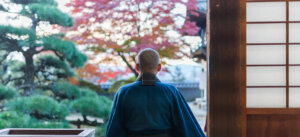
Chan, Zen, and Mahayana Buddhism in 2021

See our other Year in Review Guides: Theravada/Pali/Insight | Chan, Zen, Mahayana | Tibetan Buddhism
Receive a 30% discount on these titles through January 2nd using code 2021YE at checkout
We are very happy to share with you a look back at our 2021 books for those who practice in the family of traditions including Chan, Zen, and Pure Land.
Jump to: Reader Guides | Books | Books for Kids | Forthcoming Books | Audiobooks
Reader Guides for Chan and Zen
2021 Books on Chan, Zen, and Pure Land
“As you embrace the suffering of life, the wonder shows up at the same time. They go together.”—Charlotte Joko Beck
In this collection of never-before published teachings by Charlotte Joko Beck, one of the most influential Western-born Zen teachers, she explores our “core beliefs”—the hidden, negative convictions we hold about ourselves that direct our thoughts and behavior and prevent us from experiencing life as it is. Wryly humorous and relatable, Beck uses powerfully clear language to show how our lives present us with daily opportunities to move from thinking to experiencing, from compulsivity to confidence, and from anguish to peace. Whether you are a Zen practitioner or a reader interested in exploring these teachings for the first time, Ordinary Wonder offers the depth and breadth of Beck’s remarkable experience in an accessible guide to practice amidst the struggles of daily life.
A fresh translation and commentary on a classic collection of 100 koans from thirteenth-century China.
The Record of Empty Hall was written by Xutang Zhiyu (1185–1269), an important figure in Chinese Rinzai Ch'an (Zen) Buddhism and in its transmission to Japan. Although previously little-known in the West, Xutang's work is on par with the other great koan collections of the era, such as The Blue Cliff Record and Book of Serenity.
Translated by Zen teacher Dosho Port from the original Chinese, The Record of Empty Hall opens new paths into the earthiness, humor, mystery, and multiplicity of meaning that are at the heart of koan inquiry. Inspired by the pithy, frank tone of Xutang's originals, Port also offers his own commentaries on the koans, helping readers to see the modern and relatable applications of these thirteenth-century encounter stories. Readers familiar with koans will recognize key figures, such as Bodhidharma, Nanquan, and Zhaozhou and will also be introduced to teaching icons not found in other koan collections. Through his commentaries, as well as a glossary of major figures and an appendix detailing the cases, Port not only opens up these remarkable koans but also illuminates their place in ancient Chinese, Japanese, and contemporary Zen practice.
Clear and clearer
with the moon the heart
swells widening
out toward
what distant end I know not
A fresh translation of the classical Buddhist poetry of Saigyō, whose aesthetics of nature, love, and sorrow came to epitomize the Japanese poetic tradition.
Saigyō, the Buddhist name of Fujiwara no Norikiyo (1118–1190), is one of Japan’s most famous and beloved poets. He was a recluse monk who spent much of his life wandering and seeking after the Buddhist way. Combining his love of poetry with his spiritual evolution, he produced beautiful, lyrical lines infused with a Buddhist perception of the world.
Gazing at the Moon presents over one hundred of Saigyō’s tanka—traditional 31-syllable poems—newly rendered into English by renowned translator Meredith McKinney. This selection of poems conveys Saigyō’s story of Buddhist awakening, reclusion, seeking, enlightenment, and death, embodying the Japanese aesthetic ideal of mono no aware—to be moved by sorrow in witnessing the ephemeral world.
From beloved Zen teacher Norman Fischer, a collection of essays spanning a life of inquiry into Zen practice, relationship, cultural encounter, and spiritual creativity.
"Looking backwards at a life lived, walking forward into more life to live built on all that, trying not to be too much influenced by what's already been said and done, not to be held to a point of view or an identity previously expressed, trying to be surprised and undone and maybe even dismayed by what lies ahead."—Norman Fischer
Norman Fischer is a Zen priest, poet, and translator whose writings, teachings, and commitment to interfaith dialogue have supported and inspired Buddhist, Jewish, and other spiritual practitioners for decades. When You Greet Me I Bow spans the entirety of Norman Fischer's career and is the first collection of his writings on Buddhist philosophy and practice. Broken into four sections—the joy and catastrophe of relationship; thinking, writing, and emptiness; cultural encounters; and social engagement—this book allows us to see the fascinating development of the mind and interests of a gifted writer and profoundly committed practitioner.
“There’s so much to learn and so much to know. It’s good to keep moving forward. And yet whatever we have is, in a very profound way, absolutely complete and always enough.”—Kyogen Carlson
Kyogen Carlson (1948–2014) was a Soto Zen priest whose writings, teachings, and commitment to interfaith dialogue supported and inspired countless Buddhist, Christian, and other spiritual practitioners. Set to the rhythm of the seasons, You Are Still Here is the first published collection of Carlson’s dharma talks. It illuminates key elements of contemporary Zen practice, such as the experience of zazen meditation, the pitfalls and intimacies of the teacher-student relationship and of sangha life, the role of community in personal practice, and the importance of interfaith dialogue reaching across political lines. Carlson’s teachings also underscore his commitment to lay Buddhist practice and women’s lineages, both significant contributions to American Buddhism. The beautifully distilled talks have been carefully edited and introduced by Sallie Jiko Tisdale, a respected writer, teacher, and Dharma heir to Carlson. Her masterful presentation highlights the significance of these illuminating teachings, while preserving Carlson’s distinct style of authenticity, humor, and conviction on the Zen path.
The founder of the Soto school of Zen in Japan, Eihei Dogen (1200–1253) is one of the most influential Buddhist teachers of all time. Although Dogen’s writings have reached wide prominence among contemporary Buddhists and philosophers, there is much that remains enigmatic about his life and writings. In Dogen: Japan’s Original Zen Teacher, respected Dogen scholar and translator Steven Heine offers a nuanced portrait of the master’s historical context, life, and work, paying special attention to issues such as:
- The nature of the “great doubt” that motivated Dogen’s religious quest
- The sociopolitical turmoil of Kamakura Japan that led to dynamic innovations in medieval Japanese Buddhism
- The challenges and transformations Dogen experienced during his pivotal time in China
- Key inflection points and unresolved questions regarding Dogen’s teaching career in Japan
- Ongoing controversies in the scholarly interpretations of Dogen’s biography and teachings
Synthesizing a lifetime of research and reflection into an accessible narrative, this new addition to the Lives of the Masters series illuminates thought-provoking perspectives on Dogen’s character and teachings, as well as his relevance to contemporary practitioners.
In the fall of 629, Xuanzang (600–662), a twenty-nine-year-old Buddhist monk, left the capital of China to begin an epic pilgrimage across the country, through the deserts of Central Asia, and into India. His goal was to locate and study authentic Buddhist doctrine and practice, then bring the true teachings back to his homeland. Over the course of nearly seventeen years, he walked thousands of miles and visited hundreds of Buddhist monasteries and monuments. He studied with the leading teachers of his day and compiled a written account of his travels that remains a priceless record of premodern Indian history, religion, and culture. When Xuanzang finally returned to China in 645, he brought with him a treasure trove of new texts, relics, and icons. This transmission of Indian Buddhist teachings to China, made possible by Xuanzang’s unparalleled vision and erudition, was a landmark moment in the history of East Asian Buddhism.
As with many great pre-modern religious figures, the legends surrounding Xuanzang’s life have taken on lives of their own. His story has been retold, reshaped, and repurposed by generations of monastics and laypeople. In this comprehensive and engaging account, Benjamin Brose charts a course between the earliest, most reliable accounts of Xuanzang’s biography and the fantastic legends that later developed, such as those in the classic Chinese novel Journey to the West. Xuanzang remains one of the most consequential monks in the rich history of Buddhism in East Asia. This book is an indispensable introduction to his extraordinary life and enduring legacies.
With the release ofleading scholar Charls B. Jones' Pure Land: History, Tradition, and Practice we finally have an engaging, accessible, and surprising account of the traidtions or Pure Land Buddhism, which has more adherents than any other Buddhist tradition.
Until now, this these traditions have been poorly understood in the West. This is the case despite Pure Land teachings being well integrated throughout history with Chan and its Japanese counterpart Zen, as well as embedded in Tibetan Buddhist practice. Centered on faith, devotion, and prayer to Buddha Amitābha, Pure Land constitutes its own tradition that continues to grow in popularity throughout the world.
This concise introduction presents at last a complete and accessible guide to Pure Land thought and practice that will surprise and delight readers in its richness and scope. The author traces its history beginning from its development in India through China and Japan up to the present day. This overview goes on to cover the core principles of Pure Land centered on the belief that prayer and contemplation on Buddha Amitābha can lead to rebirth in a realm free from suffering that is ideal for progress on the path to enlightenment.
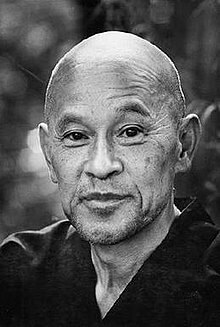
We published three works by or about Suzuki Roshi, all available as audiobooks.
The teachings of Shunryu Suzuki have served for innumerable people as the gateway to Zen practice and meditation. In Zen Is Right Now, devoted student and biographer David Chadwick sheds new light on Suzuki’s presence and teachings through selected quotes from his lectures and a variety of stories told by his students.
Complementary to another collection about Suzuki, Zen Is Right Here, this book offers a joyful bounty of anecdotes and insights, revealing a playful and deeply wise teacher who delighted in paradox and laughed often. Each of the stories and quotes presented here is an example of the versatile and timeless quality evident in Suzuki’s teaching, showing that the potential for attaining enlightenment exists right now, in this very moment.
Shunryu Suzuki’s extraordinary gift for presenting traditional Zen teachings using ordinary language is well known to the countless readers of Zen Mind, Beginner’s Mind. In Zen Is Right Here, his teachings are brought to life through stories told by his students. These living encounters with Zen are poignant, direct, humorous, paradoxical, and enlightening—and their setting in real-life contexts makes them wonderfully accessible.
Like the Buddha himself, Shunryu Suzuki gave profound teachings that were skillfully expressed for each moment, person, and situation he encountered. He emphasized that while the essence of Buddhism is constant, the expression of that essence is always changing. Each of the stories presented here is an example of this versatile and timeless quality, showing that the potential for attaining enlightenment exists right here, at this very place.
Shunryu Suzuki, author of the perennial classic Zen Mind, Beginner’s Mind, is lovingly remembered as one of the greatest spiritual teachers of the twentieth century—whose legacy is felt in every facet of American Zen. This monumental biography of Suzuki, written and read by his student David Chadwick, weaves together a rich tapestry of stories and memories of Suzuki’s students, family, and friends. In this updated and revised audiobook edition, Chadwick also offers rare excerpts from archived recordings of Suzuki’s teachings in the great Zen master's own voice.
Our natural awakening—or buddha-nature—is inherent within all of us and waiting to be realized. Buddha-nature has the qualities of both silence and illumination, and by working with silent illumination meditation you can find your own awakening. Distinguished Chan Buddhist teacher Guo Gu introduces you to the significance and methods of this practice through in-depth explanations and guided instructions. To help establish a foundation for realizing silent illumination, he has translated twenty-five teachings from the influential master Hongzhi Zhengjue into English, accompanied by his personal commentary. This book will be an indispensable resource for meditators interested in beginning or deepening their silent illumination practice.
An Important Reissue
The writings of the twelfth-century Chinese Zen master Ta Hui (Dahui) are as immediately accessible as those of any contemporary teacher, and this book, which introduced them to the English-speaking world in the 1970s, has become a modern classic—a regular feature of recommended reading lists for Zen centers across America, even though the book has become difficult to find. We are happy to make the book available again after more than a decade of scarcity.
J. C. Cleary's translation is as noteworthy for its elegant simplicity as for its accuracy. He has culled from the voluminous writings of Ta Hui Tsung Kao in the Chi Yeuh Lu this selection of letters, sermons, and lectures, some running no longer than a page, which cover a variety of subjects ranging from concern over the illness of a friend's son to the tending of an ox. Ta Hui addresses his remarks mainly to people in lay life and not to his fellow monks. Thus the emphasis throughout is on ways in which those immersed in worldly occupations can nevertheless learn Zen and achieve the liberation promised by the Buddha. These texts, available in English only in this translation, come as a revelation for their lucid thinking and startling wisdom. The translator's essay on Chan (Chinese Zen) Buddhism and his short biography of Ta Hui place the texts in their proper historical perspective.
Secularizing Buddhism: New Perspectives on a Dynamic Tradition is a very engaging and provocative essay collection that explores the opposing ideas that often define Buddhist communities—secular versus religious, modern versus traditional, Western versus Eastern—are unpacked and critically examined. While many cover topics that span all the Buddhist traditions, the two of most interest to East Asian Buddhists are:
- Charles Jones: Establishing the Pure Land in the Human Realm
- Roger Jackson: Avoiding Rebirth: Modern Buddhist Views on Past and Future Lives
Black and Buddhist: What Buddhism Can Teach Us about Race, Resilience, Transformation, and Freedom includes several contributions from Zen and Nichiren teachers and practitioners like:
- Gyozan Royce Andrew Johnson with Pamela Ayo Yetunde: From Butcher to Zen Priest - Radical Transformation through Bloodletting
- Kamilah Majied: On Being Lailah's Daughter - Blessons from Umieversity on Actualizing Enlightenment
The Woman Who Raised the Buddha: The Extraordinary Life of Mahaprajapati is first full biography of Mahaprajapati. Here, Wendy Garling presents her life story, with attention to her early years as sister, queen, matriarch, and mother, as well as her later years as a nun. Garling reveals just how exceptional Mahaprajapati’s role was as leader of the first generation of Buddhist women, helping the Buddha establish an equal community of lay and monastic women and men. Mother to the Buddha, mother to early Buddhist women, mother to the Buddhist faith, Mahaprajapati’s journey is finally presented as one interwoven with the founding of Buddhism.
For Kids
In 2021 we published three wonderful books parents who want to expose their kids to the ideas, culture, and figures of Mahayana traditions. We hope these delight them!
Forthcoming in 2022
And we have even more from the Chan and Zen traditions coming out next year from the likes of Zenju Earthlyn Manuel, Joan Sutherland, Joan Halifax, Christian Dillo, Peter Haskell, Rebecca Li, Thomas Cleary, Nancy Baker, Susan Moon, and many more. So make sure you sign up for our emails so you do not miss them! Here is a sneak peek at January's release which you can pre-order now and take advantage of the discount.
In The Shamanic Bones of Zen, celebrated author and Buddhist teacher Zenju Earthlyn Manuel undertakes a rich exploration of the connections between contemporary Zen practice and shamanic, or indigenous, spirituality. Drawing on her personal journey with the black church, with African, Caribbean, and Native American ceremonial practices, and with Nichiren and Zen Buddhism, she builds a compelling case for cultivating the shamanic, or magical, elements in Buddhism—many of which have been marginalized by colonialist and modernist forces in the religion. The book conveys guidance for readers interested in Zen practice including ritual, preparing sanctuaries, engaging in chanting practices, and deepening embodiment with ceremony.
Buddhist Audiobooks
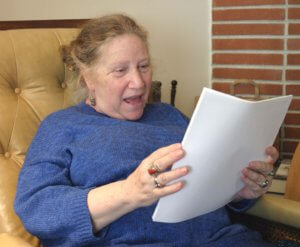
“the only war that matters is the war against the imagination.”
—Diane di Prima
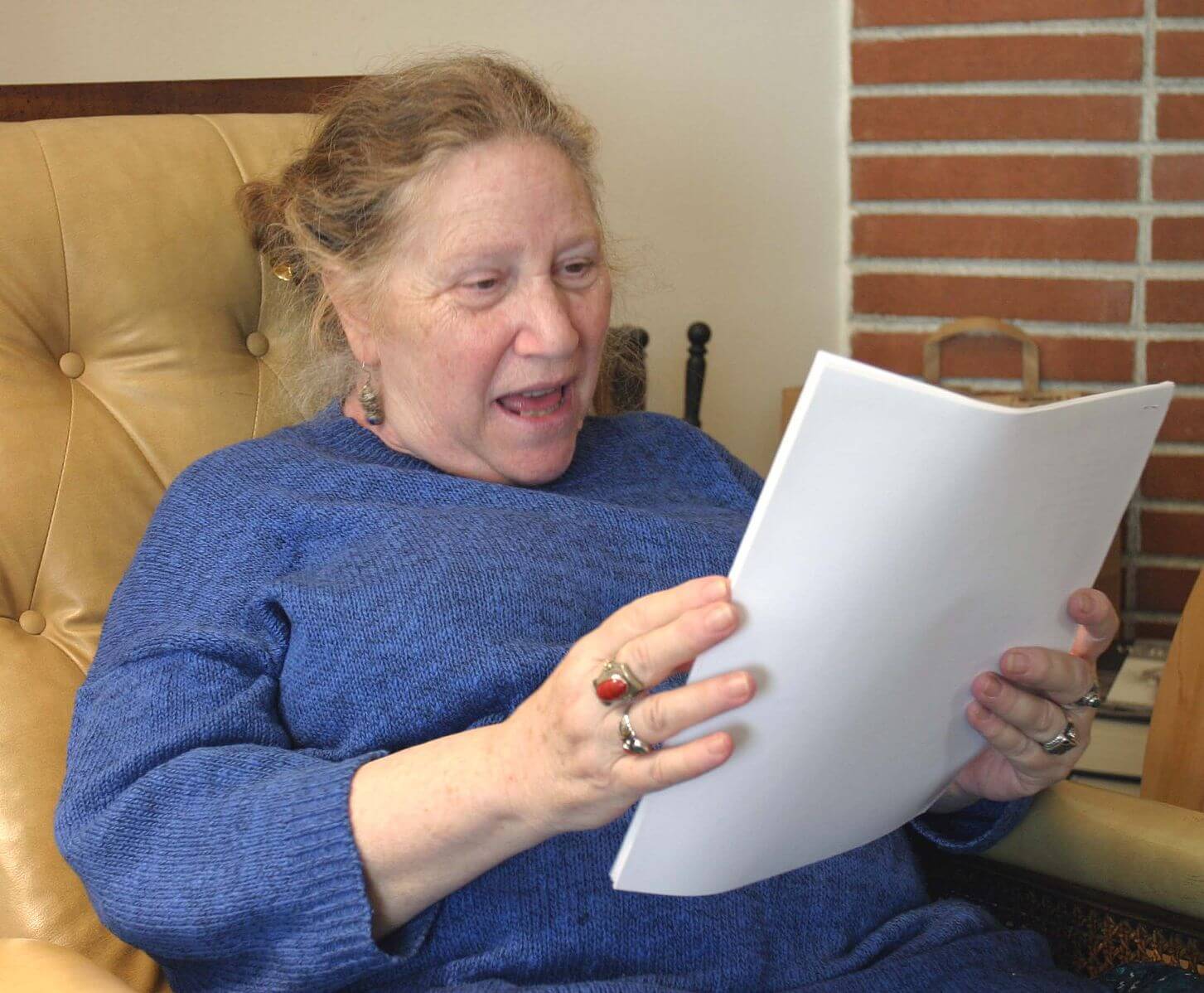
Onehandclapping, CC BY-SA 3.0
We just learned that Diane di Prima passed away on October 25th, 2020. While we did not publish any of her extraordinary stand-alone works, she and her work appear in many Shambhala Publications books. Though I had not been in touch in years, I knew Diane, especially after sitting next to her in some longer retreats with Lama Tharchin Rinpoche. She had an incredible mind. I remember her often picking up on something someone said, catching a turn of phrase that others less perceptive or less tuned into language would have not noticed, illuminating it and playing with it, making it dance. I knew her to be a superb student, teacher, friend and inspiration to many.
Allen Ginsberg described her thus:
“Diane di Prima, revolutionary activist of the 1960s Beat literary renaissance, heroic in life and poetics: a learned humorous bohemian, classically educated and twentieth-century radical, her writing, informed by Buddhist equanimity, is exemplary in imagist, political and mystical modes. A great woman poet in the second half of American century, she broke barriers of race-class identity, delivered a major body of verse brilliant in its particularity.”
But it is her own writing where she comes out and shines.
Diane's was a life well-lived. Palms together to Diane.
Nikko Odiseos, Shambhala Publications
I Fail as a Dharma Teacher
I don’t imagine I’ll manage to express Sunyata
in a way that all my students will know & love
or present the 4 Noble Truths so they look delicious
& tempting as Easter candy. My skillful means
is more like a two by four banging on the head
of a reluctant diver
I then go in and save—
what pyrotechnics!Alas this life I can’t be kind and persuasive
slip the Twelve-part Chain off hundreds of shackled
housewives
present the Eight-fold Path like the ultimate roadmap
at all the gas stations in samsaraBut, oh, my lamas, I want to
how I want to!
Just to see your old eyes shine in this Kaliyuga
stars going out around us like birthday candles
your Empty Clear Luminous and Unobstructed
Rainbow Bodies
swimming in and through us like transparent fish.
—One of the eighteen poems in The Beat Book
A Short Profile of Diane di Prima
from The Beat Book: Writings from the Beat Generation.
Diane di Prima was born in 1934 and grew up in New York City. She dropped out of Swarthmore College to become a writer and lived in Greenwich Village, holding down a variety of jobs, consorting with artists, musicians, and poets. LeRoi Jones and his wife, Hettie, published di Prima’s first book in 1958. She was active in the Poets’ Theatre in New York and in the late sixties moved to San Francisco, where she raised five children, living in various communal situations, writing, and pursuing studies in politics, music, mythology, and religion. She also spent time in Timothy Leary’s Psychedelic community in Millbrook, New York. In 1962 she encountered the Zen teacher Suzuki Roshi: ‘‘I sat because he sat. To know his mind. It was the first time in my twenty-eight years that I had encountered another human being and felt trust. It blew my tough, sophisticated young-artist’s mind.’’ After Suzuki Roshi’s death, di Prima was accepted as a student by Chogyam Trungpa Rinpoche in 1983. Di Prima was a founding faculty member of the Poetics Program at New College in San Francisco, along with Robert Duncan, and was one of the early founding ‘‘mothers’’ of the Jack Kerouac School of Disembodied Poetics. She received a Lifetime Achievement Award in poetry from the National Poetry Association in 1993. Di Prima’s books include the incendiary Revolutionary Letters, several volumes of memoirs, such as Recollections of My Life as a Woman, and many collections of poetry, including Loba.
From Beneath a Single Moon: Buddhism in Contemporary American Poetry
"I cannot really pin down the influence of Buddhism in my work or my life-I have written very few explicitly "Buddhist poems." What I feel is that Buddhism has permeated my way of seeing the world and of being in it. For me, the basic dharmic teachings are simply axiomatic: emptiness, interdependence. They describe the actual structure of the world. Put another way, the dharma is the warp of the world on which the colors are woven.
But more than that: whether we are aware of it or not, something of Buddhism pervades American consciousness. When Bodhidharma came from India to China with the Buddhism that was to become Ch'an and later Zen, his answer to the Chinese emperor's request for "the holy teachings" was "VASTNESS, NO HOLINESS!"
This seems to me to be at the very core of who we are, what we are doing in the world at this time, as a nation and as a species, as we move out of time into space. It's a big risk and, as the dharma reminds us, there are no answers-but consciousness is shapely, and we do know more than we know."
From Heroine's Journey
Many women poets express their erotic nature in its many facets, both sensual and spiritual. In “Ave” Diane Di Prima writes of her union with the divine feminine.
. . . you are the hills, the shape and color of mesa
you are the tent, the lodge of skins, the hogan
the buffalo robes, the quilt, the knitted afghan
you are the cauldron and the evening star
you rise over the sea, you ride the dark
I move within you, light the evening fire
I dip my hand in you and eat your flesh
you are my mirror image and my sister
you disappear like smoke on mist hills
you lead me thru dream forest on horseback
large gypsy mother, I lean my head on your backI am you
and I must become you
I have seen you
and I must become you
I am always you
I must become you . . .
Diane di Prima in Recalling Chögyam Trunga
Diane di Prima, a key presence in the early years and development of the Jack Kerouac School, had became closer to Trungpa Rinpoche after the death of her own teacher, Suzuki Roshi, and worked on her ngöndro (preliminary practice involving one hundred thousand prostrations, mantras, and mandala offerings) under the auspices and guidance of the Vajradhatu mandala. “Trajectory,” a poem from those early years, carries a sense of poignant irony that suffering is the greatest blessing:
So this
1970 must be
an excellent time
when even the telephone poles scream in agony. . . .
From Haiku Mind: 108 Poems to Cultivate Awareness and Open Your Heart
Creativity and Imagination
the inner tide—
what moon does it follow?
I wait for a poem
—Diane di Prima
"The realm of creativity is interior, and is a mysterious interior journey. The Trappist monk Thomas Merton said, “our real journey in life is interior. . . .” To enter the realm of the interior, the moonlit night of dreams, of the Muse goddess, of howling she-wolves, we must leave behind boundaries, rules, and fixations and embrace the realm of intuition and imagination. Over her lifetime, the Beat poet Diane di Prima continues to rant, “the only war that matters is the war against the imagination.” To protect and revere the imagination, we need to step beyond hope and fear and enter unknown territory. In Tibetan Buddhism this unknown is a bardo, or gap, the word often used for the place between death and rebirth—yet it is also a place of in-between states of our so-called awake life: a place of pregnant uncertainty and opening into creative space. Though mostly known for writing longer series of poems, di Prima has embraced haiku, and says about it: “Most recently it’s been all about spaciousness, vastness in the fewest possible strokes. Images. Letting the breath open the sky.” And always, leaving the space for the moon to illuminate and move the tides."
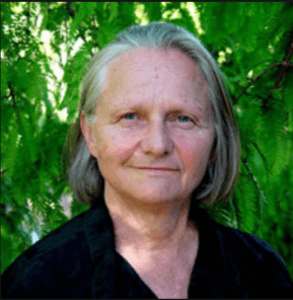
Yvonne Rand: A Profile of a Life of Zen
A Remembrance of Yvonne Rand
Yvonne Rand, a leading teacher and figure in Zen Buddhism in the US, passed away on August 19, 2020.
The following profile of is an excerpt from Meetings with Remarkable Buddhist Women by Lenore Friedman

Yvonne Rand (image credit: Cuke.com)
For twenty years, ever since she met Shunryo Suzuki-roshi in 1966 and became Zen Center secretary four months later, Yvonne Rand has been intimately involved with the San Francisco Zen Center. She has held virtually every administrative office one can hold there, as well as working closely with Suzuki-roshi in a hundred ways for the rest of his life. Most recently she has lived and worked at Zen Center's facility in Marin County, Green Gulch Farm. Yvonne is an articulate, forthright, down-to-earth woman with whom it is invigorating to talk.

For her personally, two of the most important have been the practices of breath-walking and of the "half-smile," each of which she learned from the gentle Vietnamese Zen master Thich Nhat Hanh. "Learn to walk as a Buddha walks, to smile as a Buddha smiles," he says. "You can do it. Why wait until you become a Buddha? Be a Buddha right now, at this very moment!" Yvonne now practices the half-smile at stoplights and in grocery lines. Having breath-oriented practices that can be done for one to three breaths in the midst of activity has helped her experience a connectedness between the states of mind that arise in formal meditation and those arising in everyday life.
Other practices, especially with the precepts ( or rules for conduct), have been useful in examining deeper levels of herself, levels beyond action and language and thought. Layers of resistance and denial had to be plumbed, but now she experiences a much wider range of connection with other people. A vipassana forgiveness meditation, for example, has been useful in working with her "fierce, judging voice"-that voice so peculiar to American and Western minds, which Yvonne perceives as a wall or hindrance to being awake.
The precepts are "absolutely necessary ground" for her. "I can't be calm if my behavior is 'off.' " Sometimes she will use one precept as a mantra. Or she will hold, in the background of her mind, the image of a sieve, each of whose wires are the precept, through which she passes everything she does or thinks or says during the day. This ''creates a grid-large holes or smalldepending on the gross or subtle material which I intend to pass through it." This image came out of her working in her garden and noticing how different gradations of sieves determine the soil one can make. Images have more liveliness, she believes, if they come out of concrete experience.
Yvonne respects the way "practice grabs us. One of the precepts often jumps off the page at me, from an intuitive, barely conscious awareness of exactly where an 'edge' is at any moment." For instance, the precept about not stealing, or not taking what is not given (a translation Yvonne prefers), has expanded for her into an acceptance of things-as-they-are, which has been "very, very powerful." She says the precept acts like a rope along a pathway, and has allowed her to move through and be done with old patterns more effectively than any other single practice she has done up to now.
With its constant reminders of impermanence, she says, Buddhism helps us cultivate nonpossessiveness toward everything, including our personalities, or ''who it is we think we are."
Mindfulness practice, with its emphasis on being awake to whatever arises, teaches us to relate to our "stickiness and corruptibility" as grist for the mill. Aversion is an obstacle to seeing things as they are. Seeing leads to the possibility of transformation. "We're all corruptible," she says. But the degree to which we know our capacity for corruptibility ( that is, the roles and masks we wear that cause disharmony or harm to ourselves and others) is the degree to which we don't act on it.

There is a Tibetan practice called the "inner offering" that Yvonne finds very useful here. Imagine, she said, a bowl carved out of a human skull. ( She recently brought one back from India.) Fill it with whatever stands for the "dark side" in you: blood, bones, shit, instruments of mayhem and torture, whiskey, demons. With a chopper, chop it all into tiny bits until it is transformed into nectar-which then can be an offering. In the same way we can chop up our corruptibility and transform it into an offering, says Yvonne.
Working with these different approaches from other schools of Buddhism has brought her back, refreshed, to traditional Zen practice. She is now interested in reexamining some of its formal aspects, such as dokusan and certain rituals in the zendo. She asks penetrating questions about power, authority, dependency, and relationships within the community of practitioners. How can we cultivate interdependence while, for example, we are doing retreats and giving lectures?
"Over and over, in meditation centers all over the U.S., issues of authority and projection are coming up. In our understanding of the Zen tradition as coming from Japan, we include robes from Tang-dynasty China, shaved heads, formality in meeting, hierarchy in the authority structure, and a tradition which, in its ideal form, includes long periods of living a daily monastic life with one's teacher. If I give a lecture in my traditional robes, I can feel an increase in the degree of authority which the people listening to my lecture attribute to me. They edge toward accepting what I say as true, without really examining and questioning it. Subtle changes, but they go deep, begetting a kind of handing-oneself-over. This is sometimes useful in one's learning process, but it is also dangerous to student and to teacher alike if not really conscious and within clear boundaries.
"Each of us needs to be in a feedback system. Without that we can fool ourselves about what we are actually doing to ourselves and to others. I find a deep resonance with the Buddhist tradition of being a spiritual friend. I can be on the path with another and offer what I have found in my practice. If my experience can be helpful to another, that is great. And if it is not useful or helpful, that is all right too. We can, in any event, walk this path together." Some very specific, bold, and concrete questions have been surfacing. For example, Yvonne wants to know, "How do those of us in teaching positions get others to shed light on our shadow side so that we ourselves can see it?" She's been encouraging students to do this recently, but that's not enough, she feels. It needs to be done with peers as well. "We need to hear what our peers have to say, no matter how discomfiting." One suggestion she makes is for weekly peer consultation groups for people at Zen Center who conduct practice interviews with students. What, she wonders, would constitute an environment safe enough for looking at our shadow side? The group would have to be small, but not too small ( five people would be the perfect size, she believes). There would have to be agreements about process-for example, a commitment to self-revealing and real contact with each other, a shared interest in each other's development, a willingness to attend each other's lectures and interviews and to share critiques: in other words, a totally open process that would be revolutionary in most traditional Zen settings, and certainly at Zen Center.
Yvonne's teaching activities at present include Sunday lectures at Green Gulch once every four or five weeks; leading a day of mindfulness once a month (including zazen, breath-walking, half-smile, and simple physical work); periodic workshops and weekend retreats on Zen and mindfulness practice at Green Gulch and elsewhere; retreats on death and dying, and workshops using pain as a teacher; and profession-specific retreats for people in the helping professions, lawyers, nurses, and doctors. She is primarily interested in working with "householders"-lay people practicing in ordinary life.
Since she was a child Yvonne has felt a special affinity for adolescents and old people, when "developmentally things are up for grabs, challenging and yeasty," and she wants to continue working with these age groups. In the future she also wants to work with people in mainstream work situations, giving longer, more intensive retreats in business and industrial settings. She says she wants to explore "visible versus invisible practice," and her trajectory seems to be to extend herself farther and farther into the ordinary world from the intentional community that has been her base for twenty years.
Yvonne is also profiled in Jan Chozen Bays' Jizo Bodhisattva
In response to my "updating" questions, Yvonne Rand wrote me the following letter, which I have lightly edited:
Dear Lenore,
You ask me where is my life right now? Where is my practice? "My home path continues to be Soto Zen, with significant amplifications from the stream of the Elders and the heartcentered practices of Himalayan Buddhism. Beginning in the winter of 1985-86, I was fortunate to meet and begin studying with His Holiness the Dalai Lama and the Venerable Tara Tulku, then the abbot of the Tibetan monastery in Bodh Gaya, India. Over the years, until Tara Tulku died, I was able to study closely with him and, most important, to study him and his life. I learned more than I probably yet know from his great and deep mind and heart and especially from his continuous expression of boundless compassion. He supported me in staying with my home path in a way that now seems remarkable. He took interest in teaching me about how and what to teach. And with him, I had a taste of what a truly androgynous person looks and feels like.I have been teaching at Redwood Creek Dharma Center in Marin County since the late eighties. Our center is small and eccentric, set in the midst of a beautiful garden with places to meditate both outdoors and in. Developing this center has given me a chance to express my artistic inclinations to create a place filled with beauty and fun. The situation has grown slowly and organically and is small enough so that I can know the people I practice with quite well.
I also have the great good fortune to be studying with a Zen teacher who is a real yogi, Shodo Harada, Roshi, from Sogenji Temple in Japan.
Since the early nineties, I have met regularly with a number of teachers from various Buddhist schools and traditions. The contact and friendship that have grown out of these meetings help me keep an eye on my own capacity for self-deception and other pitfalls that lie in wait for anyone occupying a teaching seat. I value the company and feedback from colleagues and friends willing to speak up when they notice something I might need and want to notice myself. We discuss our teaching lives and give each other suggestions and inspiration.
In the fall of 1997, I was diagnosed with a cancer and subsequently had surgery. The entire journey from diagnosis through recovery was a great teaching and a chance to go deeply into breath practice of the most ancient and reliable sort. I found affirmation that dharma practice is exactly the resource I have always known it to be. The challenge of this time was learning to receive help, to be helpless with grace, and to taste the extraordinary experience of being prayed for.
I am now old enough for the teachings on impermanence to have become more than theoretical ( as though they were ever other than what is so). My mother died last year, in her nineties, after a long and unhappy life. Despite all the experiences I have had being with people as they die, I found her passing remarkable and difficult.
Today, I lead retreats, both long and short, give dharma talks fairly often, enjoy working both individually and in groups with all sorts of people, cultivating an authentic spiritual life. I continue to lead a ceremony for children who have died through abortion, miscarriage, and sudden infant death. I do this ceremony once a season and find that more and more people, as they hear about it, respond to the container it can provide for the grief and suffering that otherwise may linger unresolved for years.
In the past several years, I have been invited to teach in situations that are not identified as Buddhist and have found the forays into the larger American secular world quite stimulating. A long-standing interest for me has been to find ways of talking about the Buddha dharma in language and with images that arise out of our own cultural context and to find ways to make Buddhism accessible to people in the mainstream. I am currently writing a book on right speech. I find writing as another form of teaching quite enjoyable, and at the same time, the process of writing is teaching me.
Recently, I have been exploring how to live a life that is less busy and less scheduled and has, consequently, more opportunity for spontaneity. The long time I had for recovering from surgery taught me a lot about the high price we Americans pay for our dense and busy lives. I have worked all of my life since I was thirteen years old. This is the first time I have truly 'just stopped' for an extended period of time. I notice a vast difference in my life, inner and outer. For example:
I am meeting individually with a rather small number of students these days, and I notice that with few appointments, I have large blocks of time that I can now spend writing or studying or working in the garden. I have time to sit in the morning sun or to watch the birds. I experience creative energy arising often and in ways that leave me surprised and delighted. For years, I have aimed to do more of less. Now I am beginning actually to get the taste of what this way of living feels like. There is an enriching of the day's experiences that seems to come without any special bidding or expectation on my part.
And my teaching is different, goes deeper, as a result. There is a price to pay for this shift, but I think a simpler lifestyle is exactly what is needed to cultivate the heart/mind deeply. And I like it. In addition to writing, I am drawn back to my old friends, clay and stone. I do not know what will become of this shift toward quietness, but I do know I am very much enjoying my life now."

